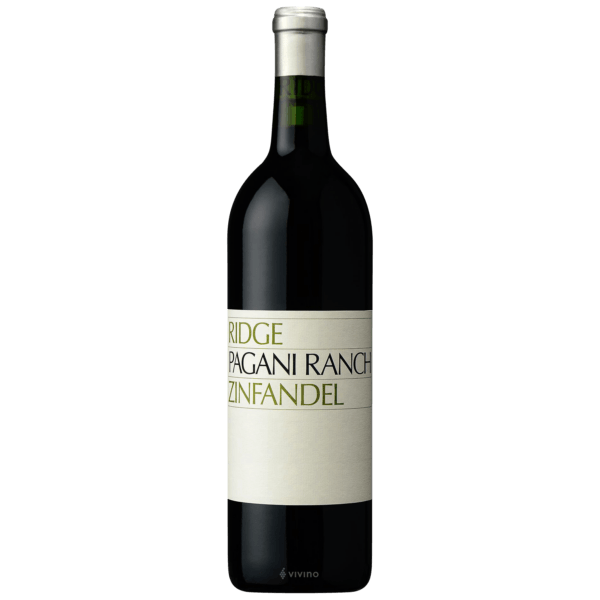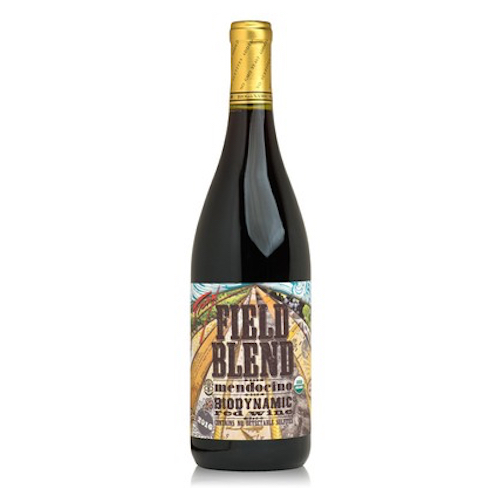2020 Ridge Vineyards Zinfandel Pagani Ranch
$50.99
| Vintage | |
|---|---|
| Size | |
| Color | |
| Varietal | |
| Region |
2020 Ridge Vineyards Zinfandel Pagani Ranch
2020 Ridge Vineyards Zinfandel Pagani Ranch Wild-berry, blue-flower and damp earth aromas lift out of the glass of this 2020 wine. On the smooth, accessible palate, supple tannins caress juicy Marasca cherry, mocha and a hint of star anise alongside bright acidity.
Zinfandel Wine
Zinfandel (or “”Zin””, as it is affectionately known in the United States) is a dark-skinned red wine grape variety widely cultivated in California. It arrived in the Americas from Europe in the early years of the 19th Century, and was an immediate success in both Napa and Sonoma counties, which remain its strongholds today. After 30 years of discussion and disagreements (including legal intervention by the Bureau of Alcohol, Tobacco and Firearms), DNA research carried out by Carole Meredith of the University of California at Davis from the early 1990s to 2002 (known as the Zinquest) confirmed that Zinfandel is identical to Italy’s Primitivo. But although this research closed the debate over whether Zinfandel is Primitivo, it opened up an even older chapter of the variety’s history.
We know that Primitivo arrived in Italy via Croatia, where it was known by various names including Tribidrag and Crljenak Kastelanski. But the question of whether Zinfandel arrived in the U.S. from Italy or via another route remains unanswered. So the question is now: is American Zinfandel based on Primitivo cuttings, or Tribidrag, or both? Another unsolved mystery is the linguistic origin of the word Zinfandel. Zinfandel has been used to make various wine styles since it arrived in the USA, including dry and sweet red wines and the famous White Zinfandel blush, created to cater for a white wine-drinking American consumer base of the 1970s.
The arrival of this new wine style in the early 1970s led to an explosion of Zinfandel plantings – perhaps ironic given that the style of wine was created to find a use for the swathes of underused Zinfandel vines already in existence. By the 1990s the popularity of dry red Zinfandel had given these plantings a new raison d’etre, although they were still being used to generate many millions of liters of sweet pink blush every year.
Related products
Cabernet Sauvignon
CHATEAU STE. MICHELLE CABERNET SAUVIGNON COLD CREE 750ML
2003 Fonseca Porto Vintage 2003 Fonseca Porto Vintage The 1994 vintage of this wine was ranked #1 on the Wine Spectator’s Top 10 Wines of 1997 Fonseca vintage ports are renowned for their great fruit richness and voluptuousness, and, while powerful and mouthfilling, for their breed and balance. In the context of each vintage, they [...]
Beringer Vineyards Cabernet Sauvignon Knights Valley Beringer Vineyards Cabernet Sauvignon Knights Valley, Sonoma County, USA, A concentrated, elegant Cabernet Sauvignon farmed sustainably and by hand in our vineyards in Knights Valley. Expansive and juicy dark cherry and and berry flavors are rounded with smooth oak integration and a generous finish. Cabernet Sauvignon is probably the most [...]
Cabernet Sauvignon
BEAULIEU VINEYARD CABERNET SAUVIGNON RUTHERFORD 1.50L





